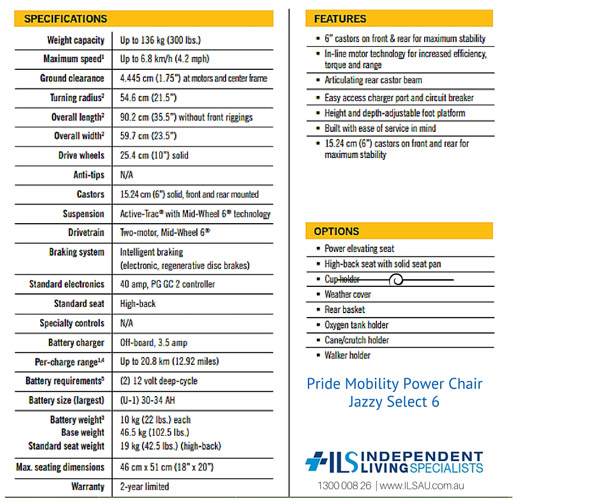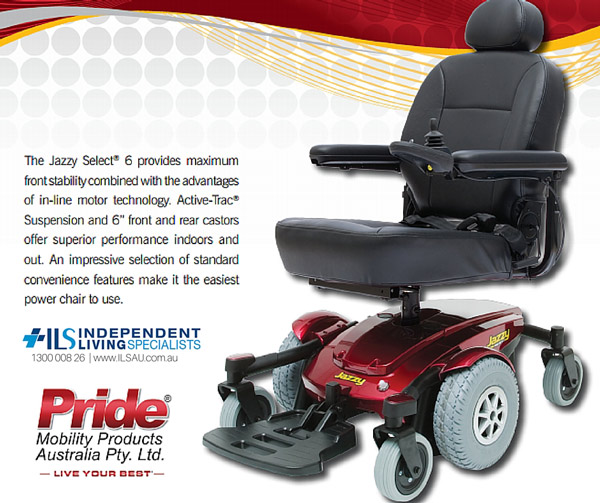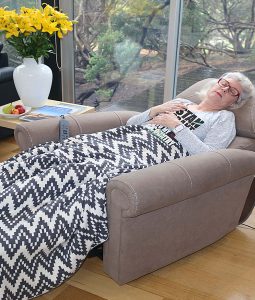If are looking to make your life or the life of a loved one easier, choosing a powered wheelchair is a great stepping to their independence. These electric (or power) chairs come with a variety of options and features that can truly help someone with mobility difficulties. These power chairs can be controlled with the help of a joystick. If the user is able to use their hands to makeover the joystick, regardless of the other mobility difficulties, selecting a powered wheelchair is a great option over the likes of a mobility scooter or a manual wheelchair, which will require more effort in terms of upper body strength.
When trying to decide which powered wheelchairs to buy, consider the following; weight capacity, dimensions, battery range, speed, turning radius, portability, adjustability, and wheels.
Power Wheelchair Weight Capacity or Max SWL
If you were looking to purchase your power wheelchair, one of the most important factors to consider would be the weight capacity of the maximums safe working limit (SWL). This is an important specification of a power wheelchair. It can affect the performance and not to mention, the safety of the user too. If you are below the weight capacity, that is ideal, however, there should be a significant gap or range between the user’s weight and the capacity. This is because if you are to “climb†a hill or a surface with a certain angled incline, the powered wheelchair should be able to easily help you up without a problem.
Dimensions of a Powered Wheelchair
The dimension of this power chair will let you know how wide and long it is which is a necessary requirement to make sure the user can manoeuvre it inside their home. By measuring the width of corridors and doorframes, you will be able to decide which models of power chairs are ideal for the user in question.
Electric Wheelchair Battery Range and Speed
If you plan to use your powered wheelchairs outdoors, you should know how far or long you can go before your battery is drained. This makes sure you are not put in a difficult situation without help by calculating and accounting for the distance in mind. One thing to keep in mind that weight is an influencing factor (as the heavier the weight, the extra battery juice is needed to stay mobile). Other factors include battery age and type of terrain.
In terms of speed, it is a good idea to check out the maximum speed the power chair model can handle. If the user would like to use the wheelchair at maximum speed, then opting for rear drive power chairs is an option.
Electric Wheelchair Portability and Adjustability
Most powered wheelchairs are bulky, but that does not mean you cannot transport it. You can use the likes of a ramp or a lift, or even opt for a lightweight portable power wheelchair option that can be assembled/disassembled for transport.
In terms of adjustability, add-on features make power wheelchairs extremely popular. With some powered wheelchairs offering recline/tilt features as well as to stand, it has many benefits for a user.
Power Chair Wheels
One of the notable physical features of a power chair is the number of wheels and its placement that are located in the front, middle, and back. Based on the drive feature you require (middle wheel drive for better manoeuvrability, rear wheel drive for better speed, front wheel drive for uneven terrain but slow), you are able to make a purchase based on the need. In addition, the type of wheel is also important, whether solid or pneumatic (which means that it is filled with air). If you are looking at using the power chair outdoors, the castor wheels, which are the non-drive wheels, should not be too small as it will not be suitable.
By considering the above features and comparing them against the specification of the power chair in mind, you can make an informed decision when selecting and purchasing a powered wheelchair. One of the Independent Living Specialists store best powered wheelchairs is the Pride Jazzy Select 6 Power Chair. Take a moment to check out this interactive image highlighting its features – Jazzy Select 6.

Pride Jazzy Select 6 Power Wheelchair Specifications







